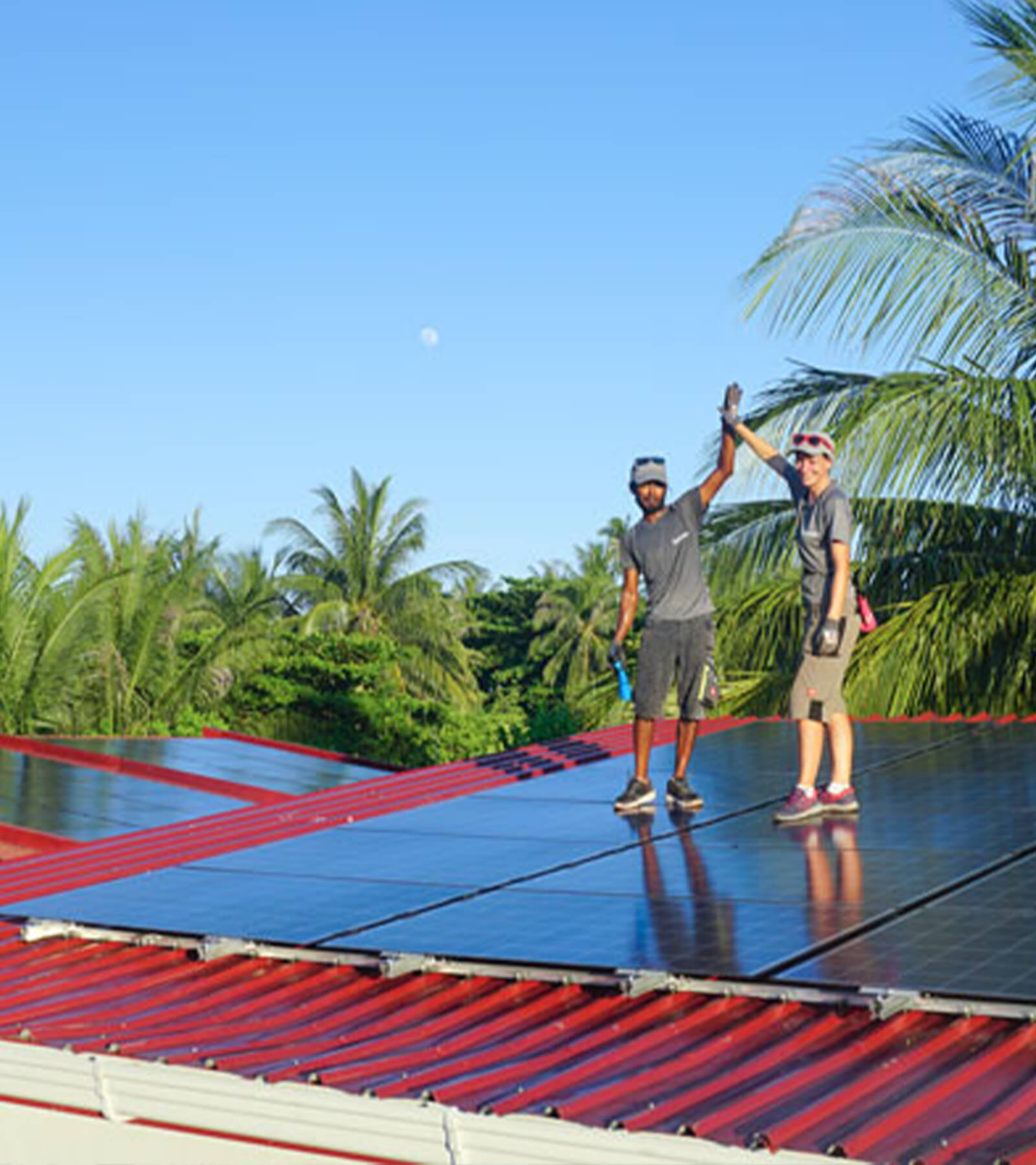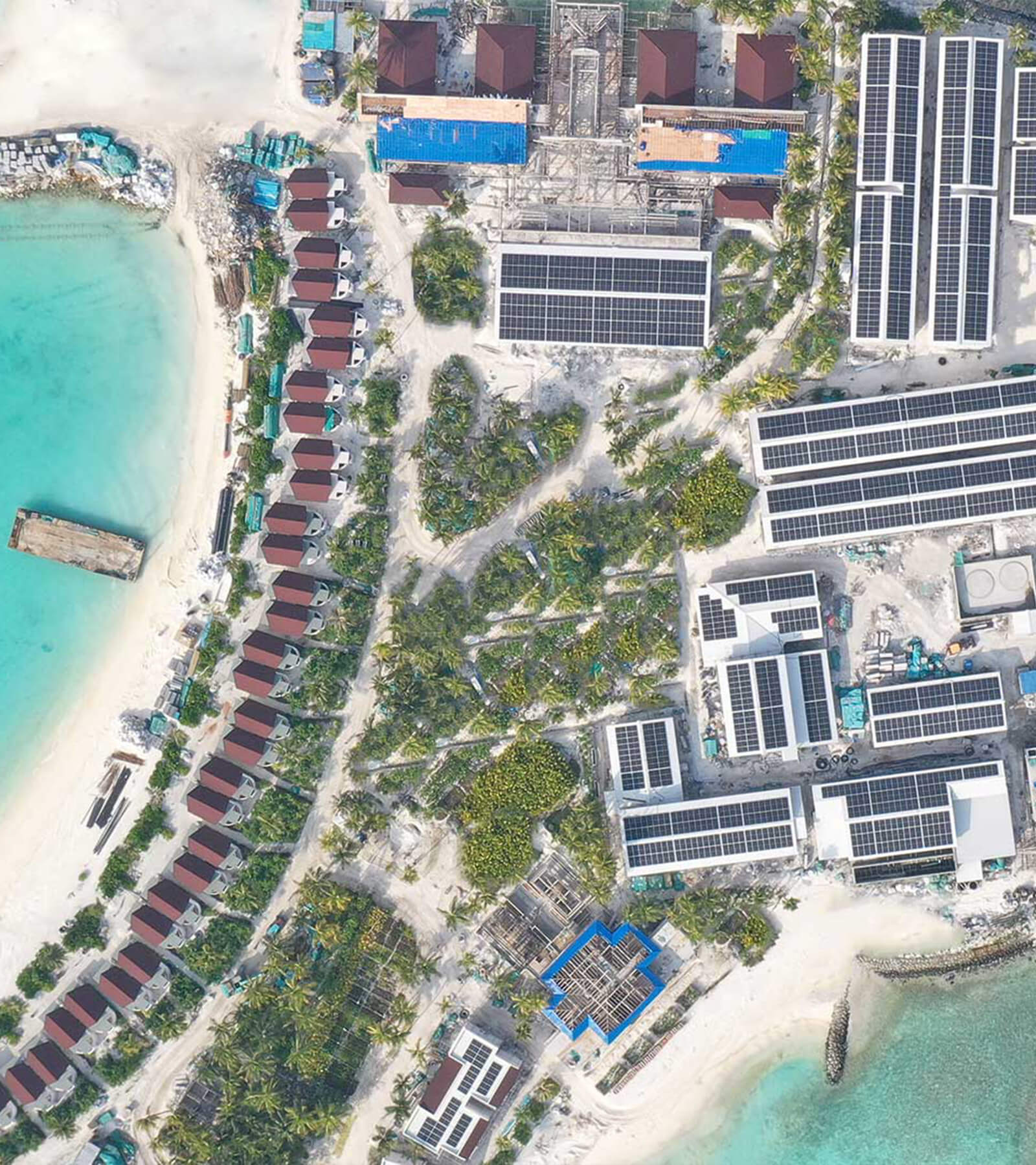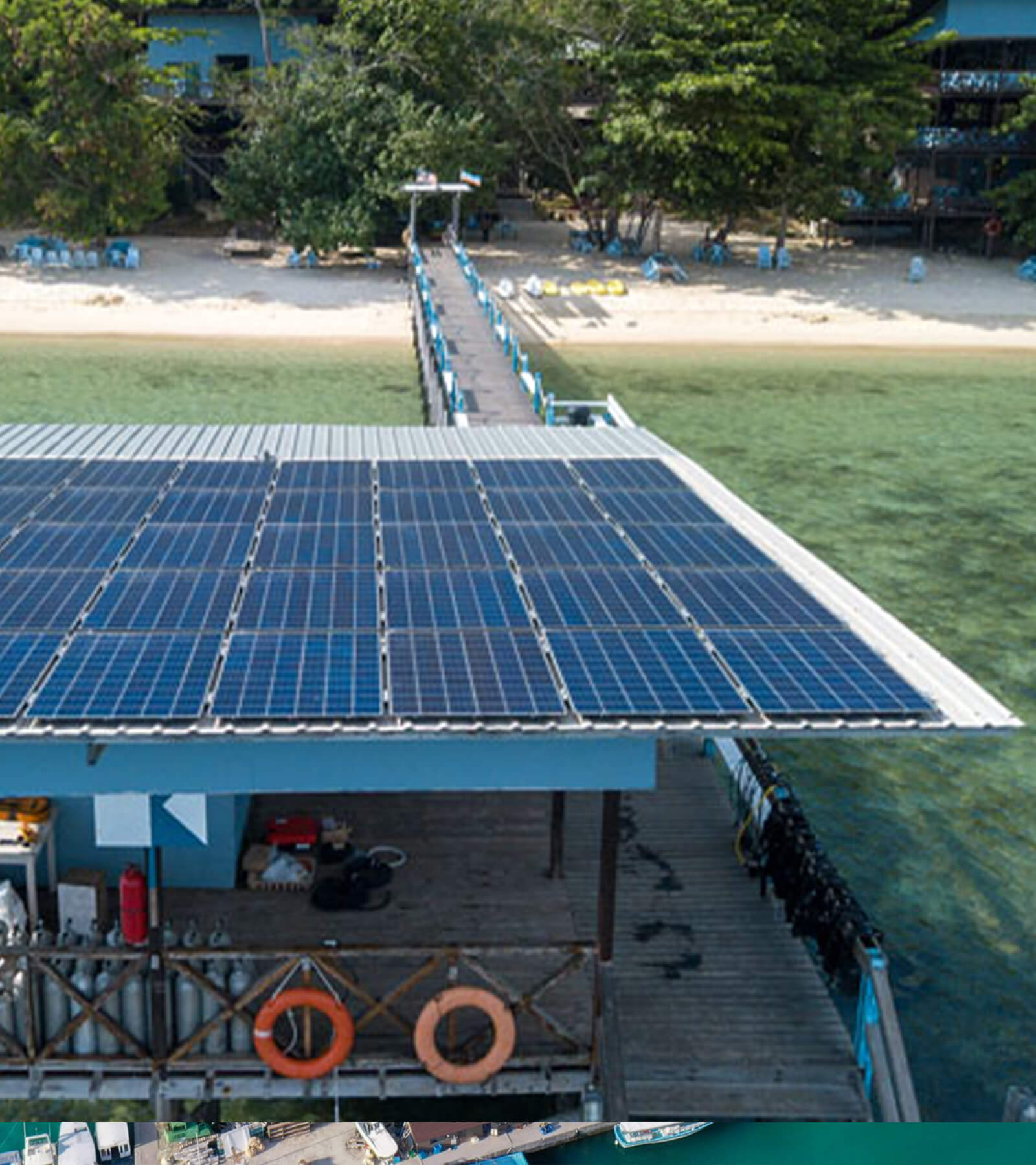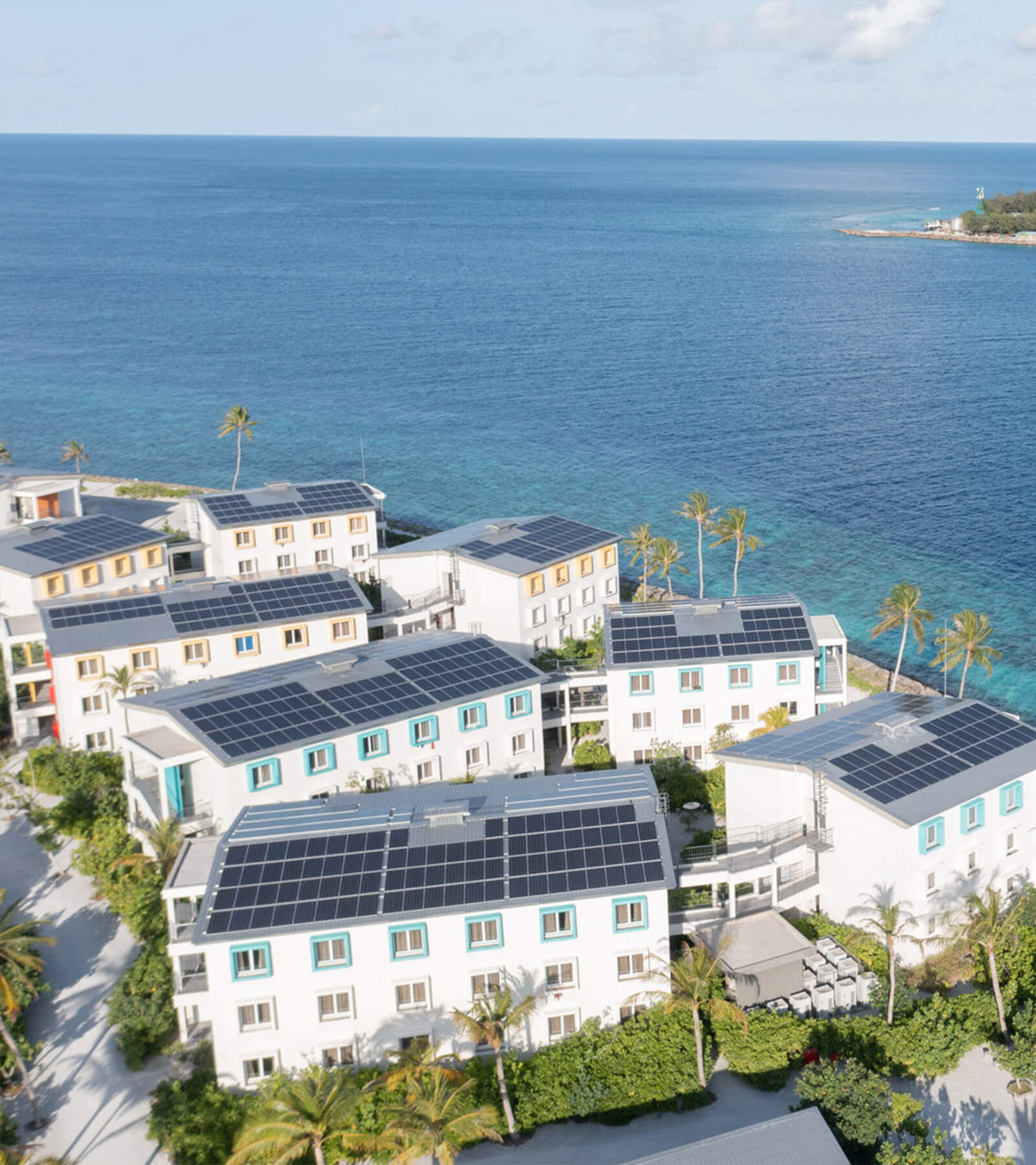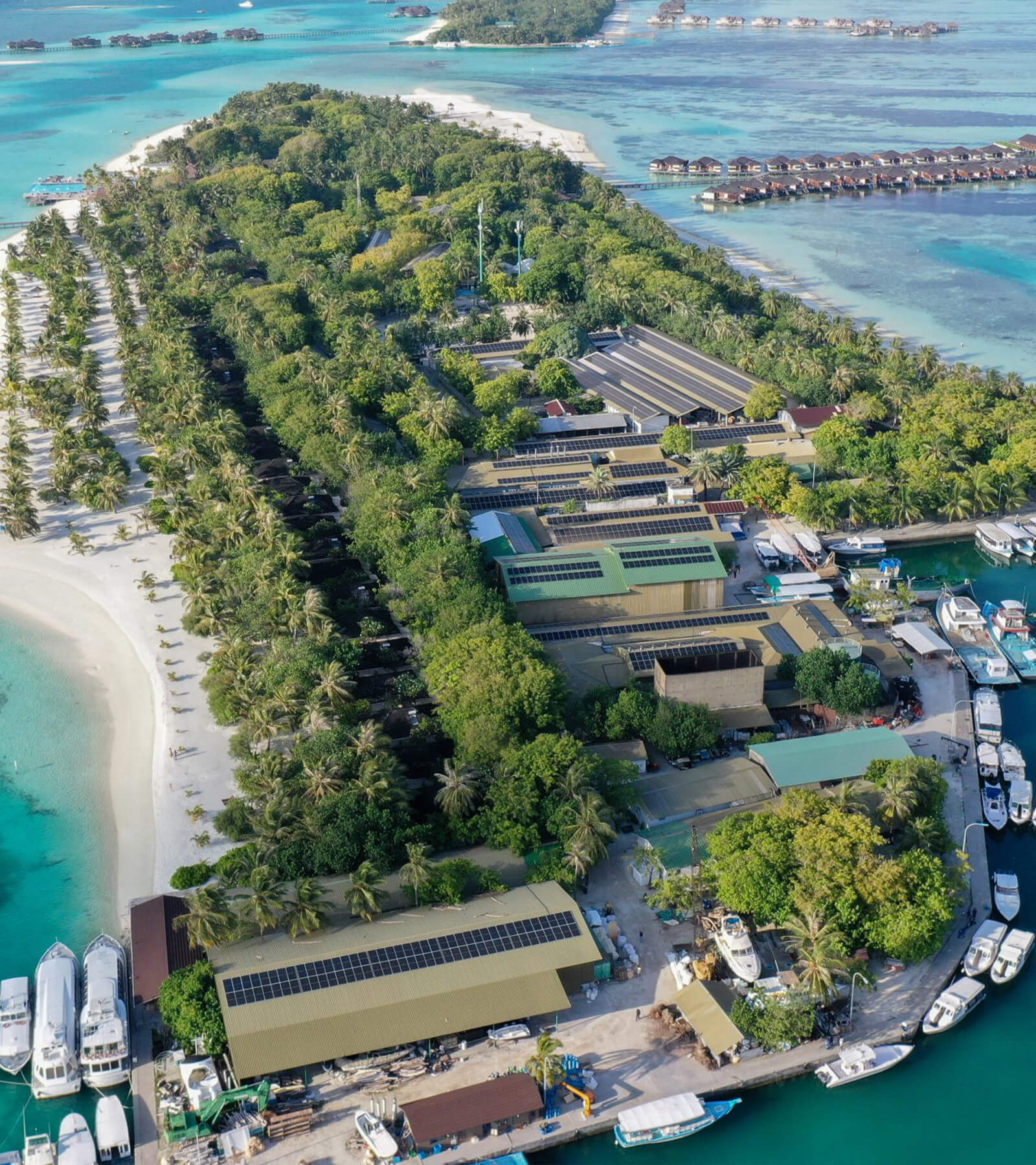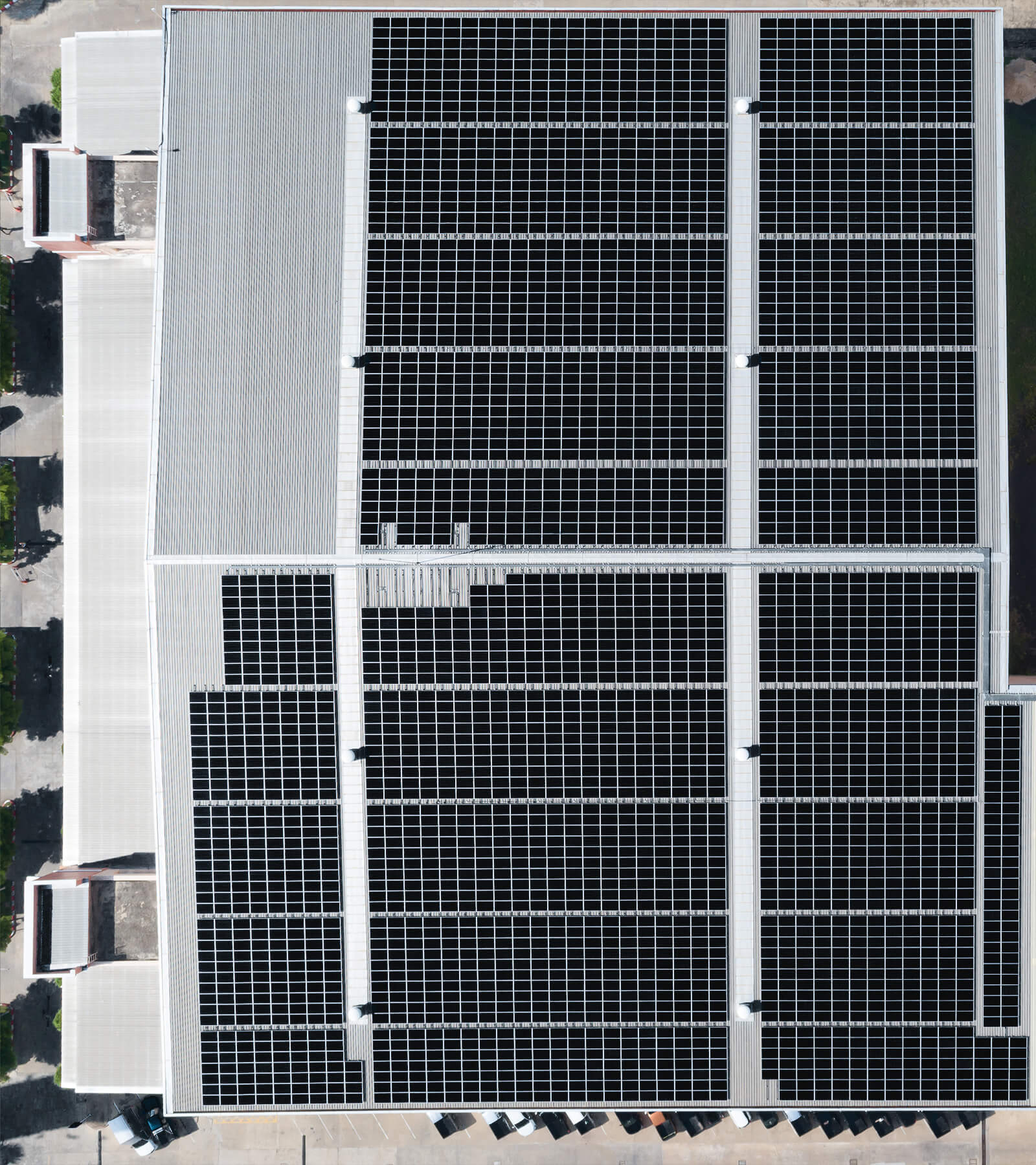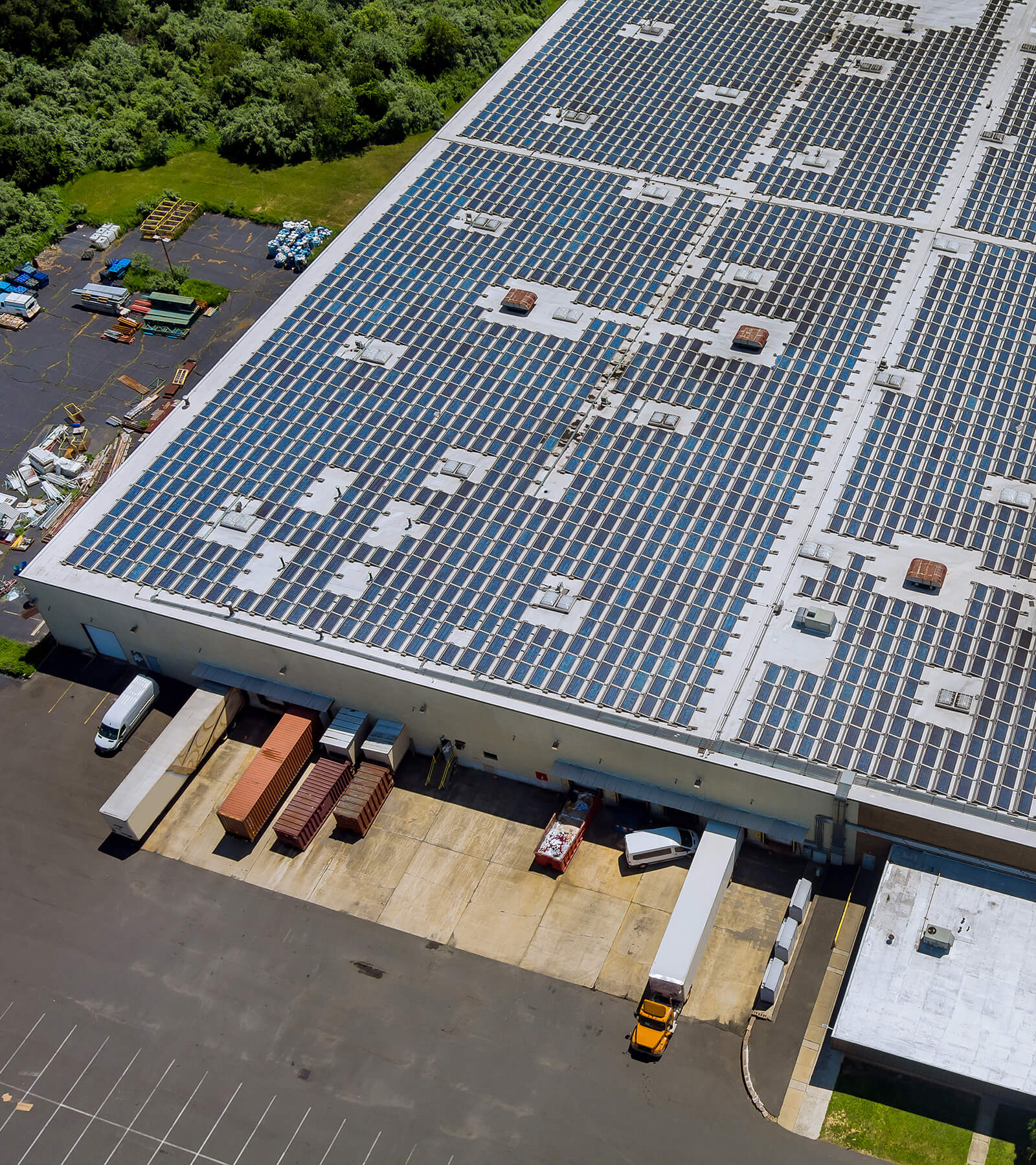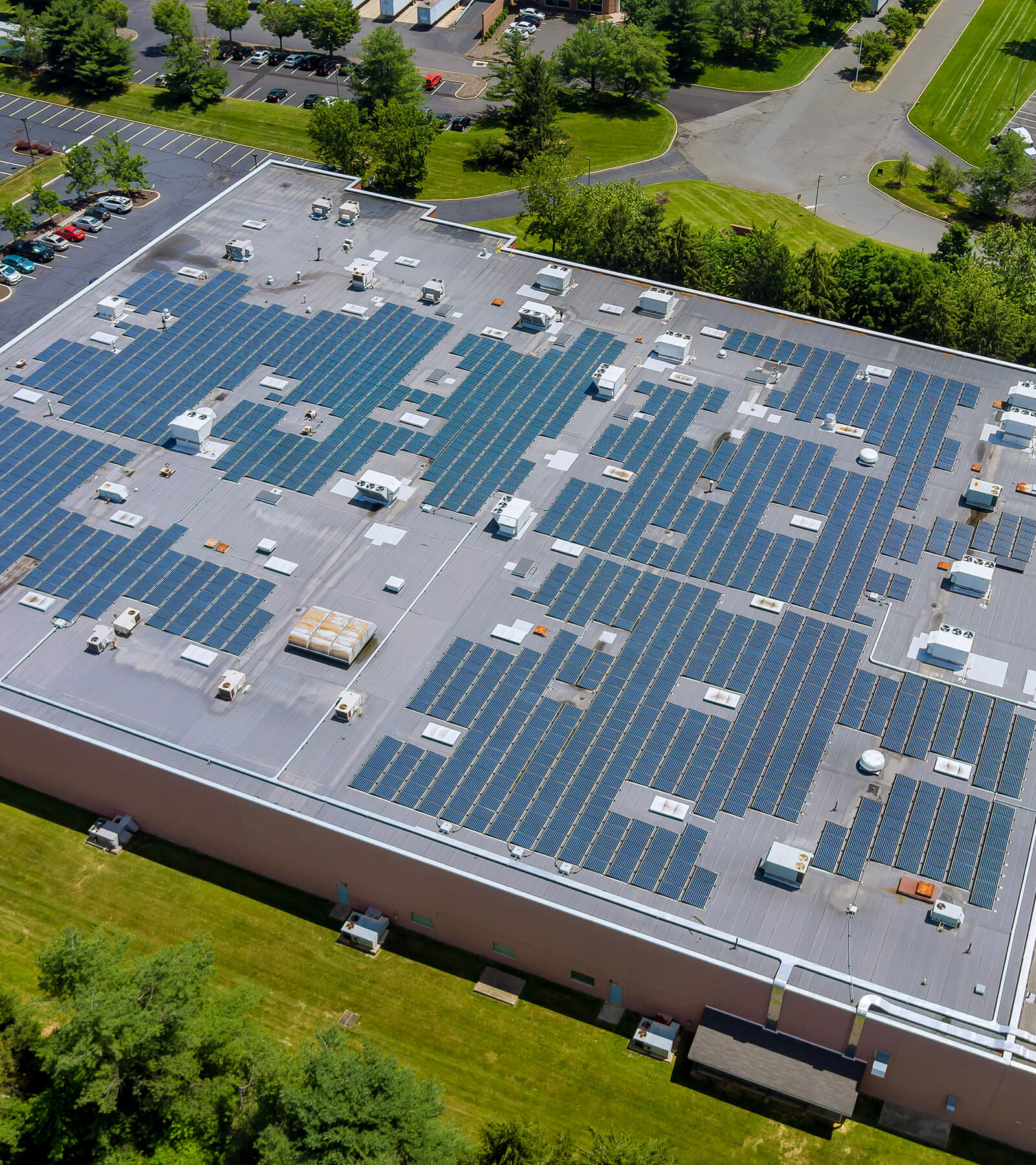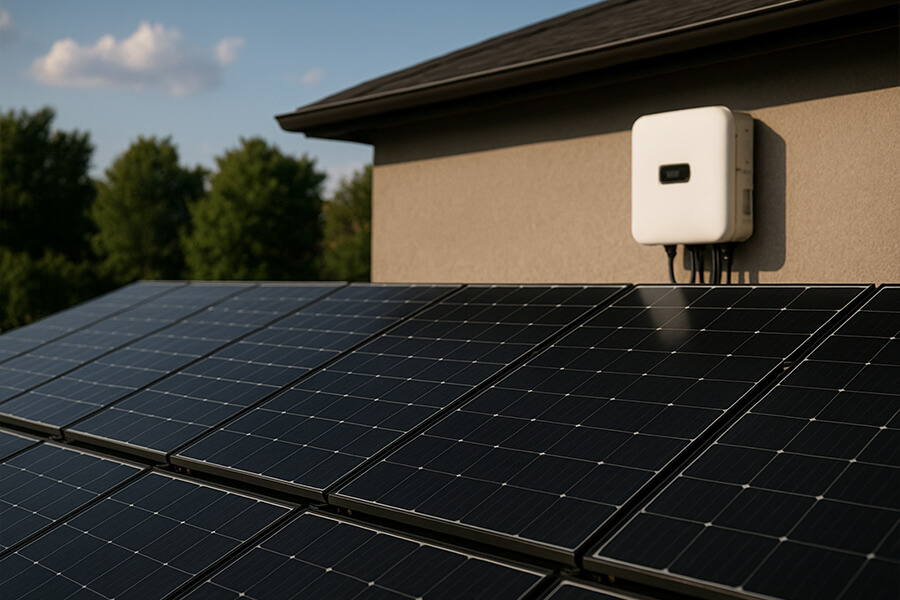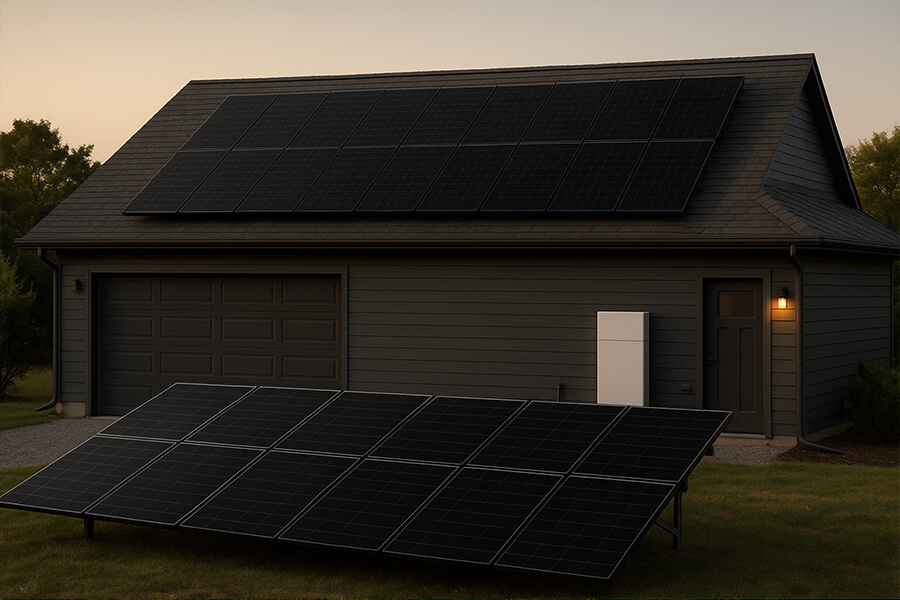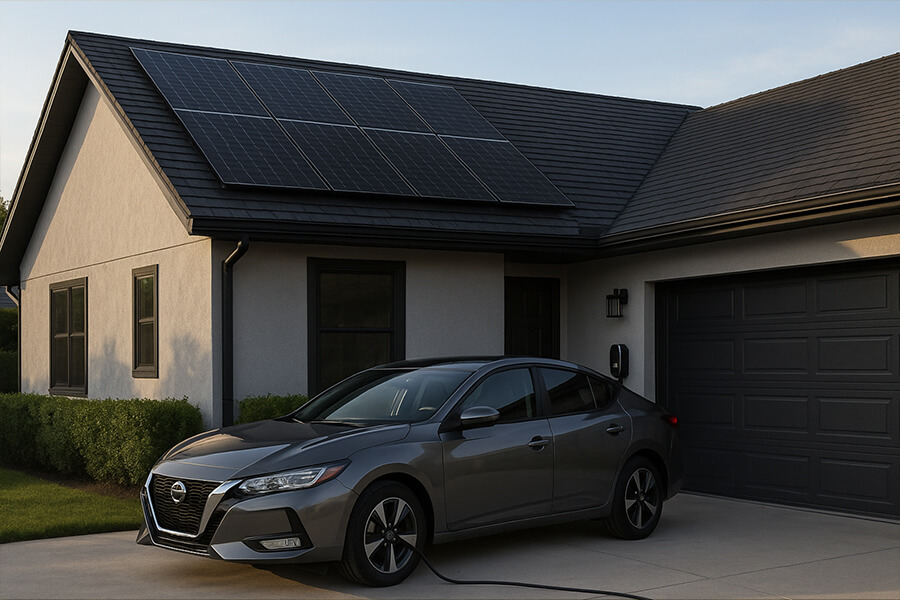Move over, drama-prone PERC panels—2025’s 16kW solar system HJT panels are here to work smarter, not harder. With 15% more output in cloudy climates (UK, we see you), 10% bonus energy from snow/roof reflections, and Panasonic’s 92% efficiency guarantee after 25 years, these panels are the Swiss Army knives of solar. Add bifacial tech that lets them sip sunshine from both sides, and you’ve got a 16kW system that’s basically the overachiever of renewable energy. Bonus: Maxbo Solar explains why HJT is the only tech that’ll survive your next rooftop snowball fight.
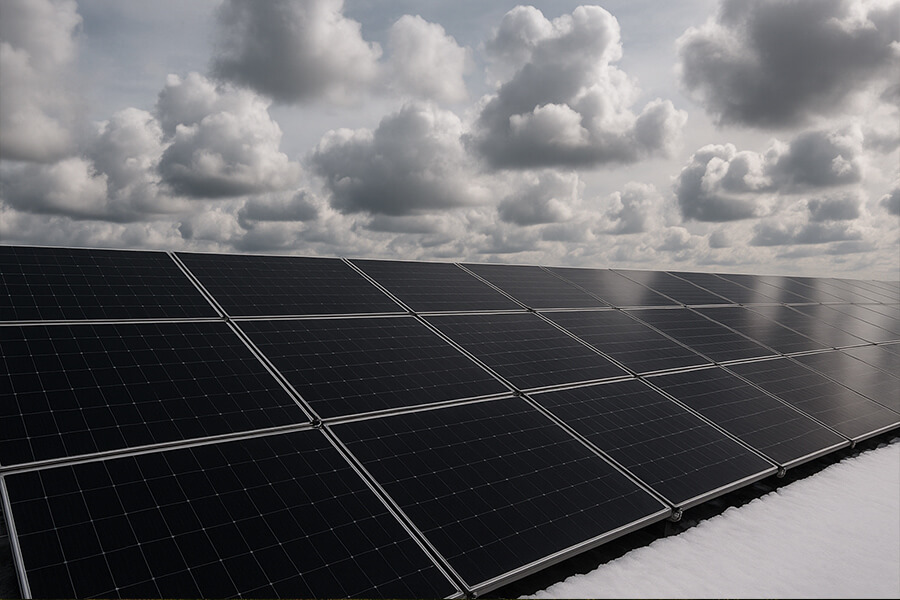
Solar Panels That Don’t Throw Shade (Literally)
Let’s face it: solar panels have historically been a bit… dramatic. They demand perfect sunshine, glare theatrically, and sulk when clouds roll in. But 2025’s HJT panels? They’re the chill, low-maintenance friend we’ve all been waiting for. Buckle up—we’re diving into why Heterojunction (HJT) panels are rewriting the rules for 16kW systems, especially if you live where “sunny days” are as rare as a polite Twitter debate.
Why HJT Panels for 16kW Systems? A Numbers-Driven Comedy
Traditional PERC panels might as well come with a diva rider: “Must have direct sunlight, no clouds, and absolutely no fun.” HJT panels, on the other hand, thrive in the real world—where clouds, snow, and questionable weather are the norm. Let’s break it down with cold, hard data (and a side of sarcasm).
Table 1: HJT vs PERC Performance in Cloudy Climates (16kW System)
| Metric | HJT Panels | PERC Panels | Source |
|---|---|---|---|
| Annual Output (UK) | 18,400 kWh | 16,000 kWh | NREL 2025 Report |
| Cloudy-Day Efficiency | 85% | 70% | IEA Solar Trends |
| Avg. Cost per Watt | $0.28 | $0.22 | Statista 2025 |
Key Takeaway: HJT panels generate 15% more annual energy in gloomy regions like the UK, even with a slightly higher upfront cost. That’s like paying an extra $0.06 per watt to never hear your panels whine about clouds again.
The Secret Sauce: Low-Light Performance That’s Basically Solar Witchcraft
HJT panels don’t just tolerate low light—they embrace it. Here’s why:
- Ultra-thin layers: HJT cells use amorphous silicon layers to capture photons even when the sun’s playing hide-and-seek.
- Temperature coefficient of -0.25%/°C: PERC panels lose efficiency faster than a melting ice cream cone on a hot day (-0.35%/°C). HJT? Barely flinches. (Panasonic Whitepaper)
- Real-world example: A 16kW HJT system in Dublin (where annual sunlight is just 1,300 hours) produces 2,800 kWh more annually than PERC. That’s enough to power a Netflix binge of 1,400 hours. Priorities, right?
What’s Next? Spoiler: It Involves Snow and Double-Sided Panels
HJT’s party trick isn’t just cloud tolerance—it’s bifacial tech, which we’ll unpack next. Think of it as solar panels growing eyes on the back of their heads. But first, let’s address the elephant in the room: Why should you care about 16kW systems?
Simple. For homes and small businesses, 16kW strikes the sweet spot between affordability and output. Pair it with HJT’s efficiency, and you’ve got a system that works harder than a caffeine-fueled intern—without the burnout.
Stay tuned for Part 2, where we’ll explore how HJT panels turn snowdrifts and beige rooftops into literal cash machines.
(Note: All costs in USD. Euro conversions available here.)
HJT vs PERC: When Clouds Roll In, HJT Keeps Grinning
Imagine two solar panels walk into a bar. The PERC panel orders a margarita but leaves when it starts raining. The HJT panel? It stays, sips a latte, and still generates 15% more power.
Cold, Hard Facts (No Margaritas Included)
While PERC panels throw shade (literally) at cloudy skies, HJT’s secret weapon is its ultra-thin layers and -0.25%/°C temperature coefficient—making it the solar equivalent of a waterproof phone. Let’s dissect why 16kW HJT systems dominate in regions where sunshine is a myth.
Table 1: Annual Performance of 16kW Systems in Cloudy Climates
| Metric | HJT Panels (UK) | PERC Panels (UK) | Source |
|---|---|---|---|
| Energy Output | 18,400 kWh | 16,000 kWh | NREL 2025 |
| Efficiency Loss at 25°C | 6.25% | 8.75% | IEA Solar |
| 25-Year ROI (USD) | $43,200 | $37,500 | Statista 2025 |
Translation: Over 25 years, HJT’s 15% higher output nets you an extra $5,700 in savings—enough to buy 1,425 lattes (or one very fancy espresso machine).
Why PERC Panels Are Solar Divas
PERC’s Achilles’ heel? Its -0.35%/°C temperature coefficient means efficiency drops faster than a TikTok trend. In cloudy, cool climates like Ireland:
- A 16kW PERC system loses 8.75% efficiency on a typical 25°C day.
- HJT? Just 6.25%, thanks to its low-light optimization. (Panasonic Technical Guide)
Real-World Smackdown:
In Glasgow (annual sunlight: 1,200 hours), a 16kW HJT system produces 2,200 kWh more yearly than PERC. That’s the energy equivalent of charging 26,000 iPhones—or powering a very committed PS5 gamer.
The Hidden Cost of “Cheap” Panels
Yes, PERC panels cost 0.22/W∗∗vsHJT’s∗∗0.28/W. But let’s math this out:
| System Size | HJT Cost (USD) | PERC Cost (USD) | HJT Lifetime Savings (USD) |
|---|---|---|---|
| 16kW | $44,800 | $35,200 | +$5,700 |
Source: SolarReviews 2025
HJT’s higher upfront cost pays for itself in 7-8 years in cloudy regions. After that? Pure profit—like buying stocks in a caffeine-addicted society.
What’s Next? Snow, Bifacial Magic, and ROI That’ll Make You Blush
Clouds are just the opening act. Wait until you see how HJT’s bifacial tech turns snow and rooftops into energy goldmines. Spoiler: PERC panels will need therapy.
Click to Part 3: Bifacial Tech – Solar Panels’ Double Agent Era.
Bifacial Tech: Solar Panels Pulling a Double Agent Move
HJT panels aren’t just efficient—they’re overachievers. With bifacial technology, they harvest sunlight from both sides, like a plant that photosynthesizes through its toes. Let’s decode how this sneaky trick adds 10% extra output to your 16kW system—and why PERC panels are stuck playing checkers while HJT plays 4D chess.
The Bifacial Bonus: Turning Reflections into Cash
Bifacial HJT panels don’t just absorb sunlight—they weaponize it. Here’s where the free energy comes from:
Table 1: Bifacial Energy Gain by Surface Type (16kW System)
| Surface | Reflectivity | Annual Output Boost | Source |
|---|---|---|---|
| Snow | 85% | 12% | NREL 2025 |
| Light-Colored Roof | 50% | 8% | IEA Solar |
| Grass | 20% | 3% | Fraunhofer ISE |
Translation: If your backyard doubles as a winter wonderland, bifacial HJT panels turn snowdrifts into a 12% energy boost. Even a beige roof (why, Karen?) adds 8%—enough to power a smart home security system and your espresso machine.
Ground-Mounted Systems: Where Bifacial Goes Full Maverick
Mount these panels 1-2 meters above reflective surfaces, and the magic intensifies:
- Minnesota Case Study: A ground-mounted 16kW HJT system with bifacial tech generated 21,500 kWh/year vs 19,200 kWh for single-sided panels. That’s **780extraannualsavings∗∗(assuming0.12/kWh). (US DOE 2025)
- Swiss Alps Installation: Snow reflection boosted winter output by 18%, making ski resorts the unlikely solar heroes of 2025.
The ROI Math That’ll Make You Blush
Yes, bifacial HJT costs 10% more upfront than single-sided panels. But let’s break down the 25-year payoff:
Table 2: 16kW Bifacial HJT vs Single-Sided PERC (USD)
| Metric | Bifacial HJT | Single-Sided PERC |
|---|---|---|
| Installation Cost | $49,600 | $35,200 |
| 25-Year Energy Income | $64,800 | $48,000 |
| Net Profit | +$15,200 | +$12,800 |
Source: SolarPower Europe 2025
Bifacial HJT delivers 19% higher profits over 25 years—enough to buy a Tesla Cybertruck’s worth of lattes.
What’s Next? Durability That Survives Your Midlife Crisis
Bifacial tech is just half the story. Wait until you see how HJT panels laugh off hailstorms and 25-year degradation. Spoiler: They’re basically the Chuck Norris of solar.
Click to Part 4: Durability – When Solar Panels Outlive Your Marriages.
Durability: Panasonic’s HJT Modules Age Like Fine Wine
Most tech gadgets retire after 5 years (looking at you, smartphones). Panasonic’s HJT panels? They’re the Betty White of solar—still kicking at 92% efficiency after 25 years. Let’s unpack why longevity isn’t just a buzzword for 16kW systems—it’s a financial superpower.
Degradation: HJT’s Slow Burn vs PERC’s Midlife Crisis
While PERC panels lose 0.5% efficiency annually, HJT’s degradation rate is a glacial 0.25% per year. The math speaks for itself:
Table 1: 25-Year Efficiency Comparison
| Year | HJT Efficiency | PERC Efficiency |
|---|---|---|
| 0 | 100% | 100% |
| 10 | 97.5% | 95% |
| 25 | 92% | 87.5% |
Source: Panasonic Warranty Data 2025
By Year 25, HJT delivers 5% more energy than PERC. For a 16kW system, that’s 1,200 extra kWh annually—enough to power an entire Tesla Model 3 for 3,000 miles.
Real-World Endurance: Arizona vs Germany
Extreme climates test durability like a stress-addicted personal trainer. Case studies don’t lie:
- Arizona Desert (16kW System): After 10 years, HJT panels retained 97.1% efficiency despite 120°F summers. PERC? Dropped to 94.3%. (NREL 2025)
- German Rainfall (16kW System): HJT’s anti-corrosion coating limited degradation to 0.23%/year vs PERC’s 0.48%. Moisture? More like profit juice. (Fraunhofer ISE)
Warranty Savings: Skip the Panel Therapy Bills
Panasonic’s 25-year product warranty and 92% performance guarantee eliminate midlife replacement costs. Compare that to PERC’s industry-standard 85% end warranty:
Table 2: 25-Year Replacement Costs (USD)
| System | Replacement Cycles | Total Cost |
|---|---|---|
| HJT 16kW | 0 | $0 |
| PERC 16kW | 1-2 | 9,600 |
Source: SolarReviews 2025
HJT’s reliability saves you up to $9,600—enough to buy a very indulgent weekend in Monaco (or a backup generator you’ll never need).
What’s Next? Warranties So Good, They’ll Make You Cry
Durability is just the start. Wait until you see how HJT’s warranty terms turn financial anxiety into pure bliss. Spoiler: Lawyers hate this trick.
Click to Part 5: Warranties – Solar’s “Set It and Forget It” Era.
Meet Maxbo Solar: Your HJT Wingman Since 2015
Hi there! I’m Maxbo Solar, and I’ve been nerding out over HJT panels longer than Stranger Things has been reviving the 80s. With 10 years of HJT expertise, we’ve turned 16kW systems into climate-slaying profit machines—no Demogorgons required.
Why We’re the Tesla of Solar (Minus the Cybertruck Delays)
We don’t just sell panels; we engineer climate-specific HJT solutions. Here’s how we dominate:
Table 1: Maxbo Solar vs Generic HJT Installers (2025 Data)
| Metric | Maxbo Solar | Industry Average | Source |
|---|---|---|---|
| 16kW System Output | 22,500 kWh/year | 20,100 kWh/year | NREL 2025 |
| Client Satisfaction | 98% | 89% | SolarReviews 2025 |
| Design-to-Install Time | 28 days | 45 days | EU SolarTrack |
Translation: Our custom designs squeeze 12% more juice from your 16kW system than cookie-cutter setups. And yes, we’ll outpace your contractor’s coffee breaks.
Case Studies: From Irish Clouds to Canadian Snow
- Dublin, Ireland: A 16kW Maxbo HJT system generated 19,800 kWh/year despite 165 rainy days—18% above local averages. The secret? Our patented cloud-optimized microinverters. (IEA 2025)
- Calgary, Canada: Bifacial HJT + snow reflectivity = 23,400 kWh/year, outperforming PERC by 27%. Take that, polar vortex.
2025-Ready Tech (Because YOLO Isn’t a Financial Plan)
We integrate tomorrow’s tech today:
- AI-Driven Monitoring: Predicts shading issues before your oak tree even grows.
- 0.22% Annual Degradation: Thanks to Panasonic’s cell tech, your panels will outlast your Netflix password.
- 25-Year “Zero Surprises” Warranty: Cracks? Snails? Hailstorms? We’ve seen it all. (Fraunhofer ISE)
The ROI You’ve Been Dreaming Of
A Maxbo 16kW system isn’t an expense—it’s a 64,800 income stream over 25years. Compare that to DIY kits 48,200, and suddenly, our dad jokes sound very financially literate.

